Before plastic wrap became the go-to kitchen covering and long before fancy storage containers filled every cabinet, aluminum foil was the Swiss Army knife of food preservation in American kitchens. Opening the refrigerator in the ’60s, ’70s, and early ’80s was like unwrapping presents—everything seemed to be bundled in that distinctive silver wrapping that crinkled when you touched it. Mom wielded that roll of Reynolds Wrap like a magic wand, transforming leftovers into mysterious packages that could hold their secrets for days, and somehow every family had their own unspoken rules about what deserved the foil treatment and what didn’t.
1. Half a Cantaloupe with the Seeds Scooped Out
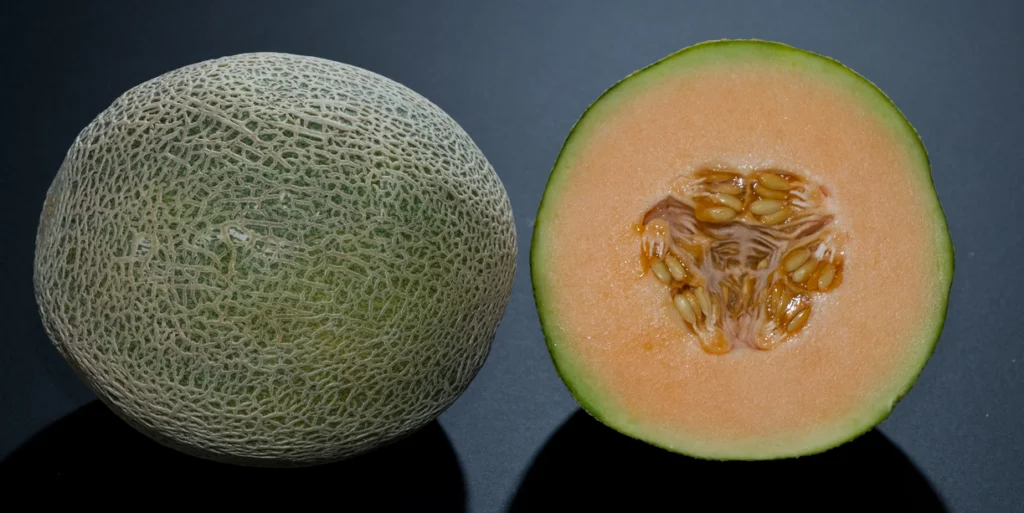
Nothing said “summer’s bounty” quite like a perfectly ripe cantaloupe cut in half and wrapped in foil, sitting in the fridge like a sweet promise of refreshment. Mom would buy these at the peak of season when they were affordable and aromatic, filling the kitchen with that distinctive honeyed scent that meant warm weather had truly arrived. The ritual of cutting it in half, scooping out the seeds with a spoon, and then carefully wrapping each hemisphere in aluminum foil was as much a part of summer as sprinklers and barbecues. WebMD gives a rundown of the health benefits that make cantaloupe worth keeping around in the fridge today.
That foil-wrapped cantaloupe half would sit in the refrigerator like a treasure waiting to be discovered, usually lasting just long enough for someone to claim it as an after-dinner treat or afternoon snack. The aluminum foil kept it fresh and prevented the sweet aroma from overwhelming other foods, though opening the fridge on a hot day meant catching that wonderful melon scent as soon as you peeled back the silver covering. There was something almost ceremonial about unwrapping that foil and finding the perfect, chilled fruit inside, ready to be eaten with a spoon while standing in the cool kitchen.
2. The Infamous Half an Onion
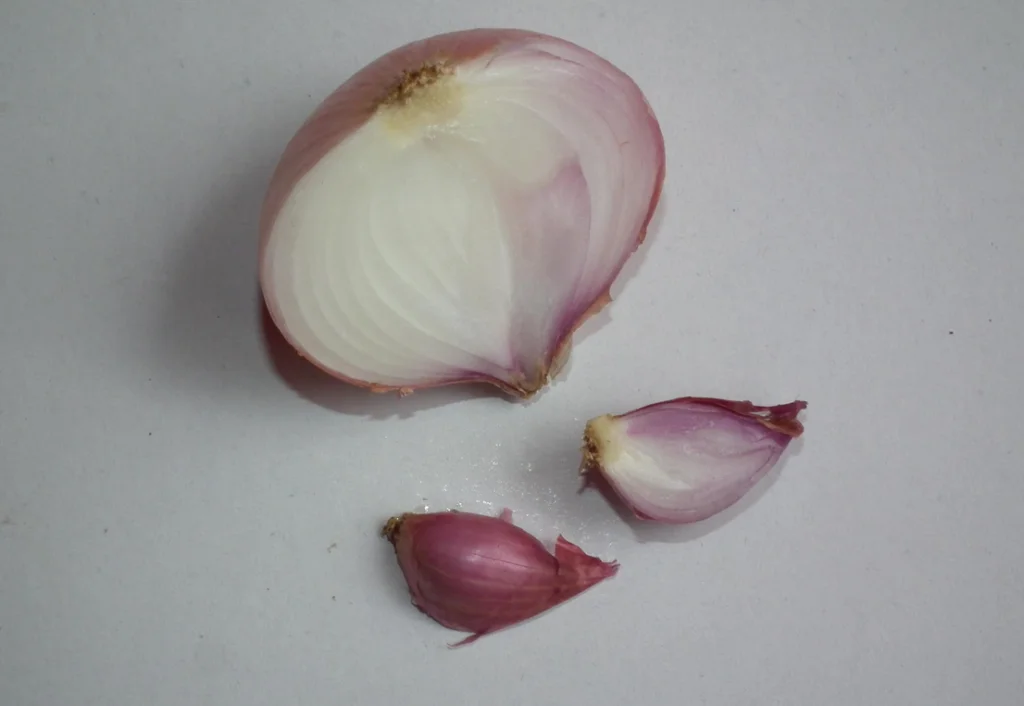
Every household had that one half onion wrapped in foil, sitting in the refrigerator like a pungent time bomb that everyone knew was there but nobody wanted to deal with. It started innocently enough—a recipe that called for half an onion, leaving the other half to be carefully wrapped and stored for “later use” that somehow never came. The foil was supposed to contain the smell and keep the onion fresh, but anyone who opened that particular package knew it was fighting a losing battle against time and chemistry. As noted by Yahoo, the onion is also at the center of a lot of myths and folk cures.
That foil-wrapped onion half became a fixture in the vegetable drawer, moving from front to back as newer items took priority, but never quite making it to the trash can because “someone might use it.” Opening the foil to check if it was still good was always an adventure—sometimes you’d find a perfectly preserved onion half, other times you’d discover something that had transformed into a science experiment. The whole family learned to recognize the distinctive shape of the onion package and developed an unspoken agreement that whoever opened it was responsible for either using it or throwing it away.
3. Leftover Roast Beef from Sunday Dinner
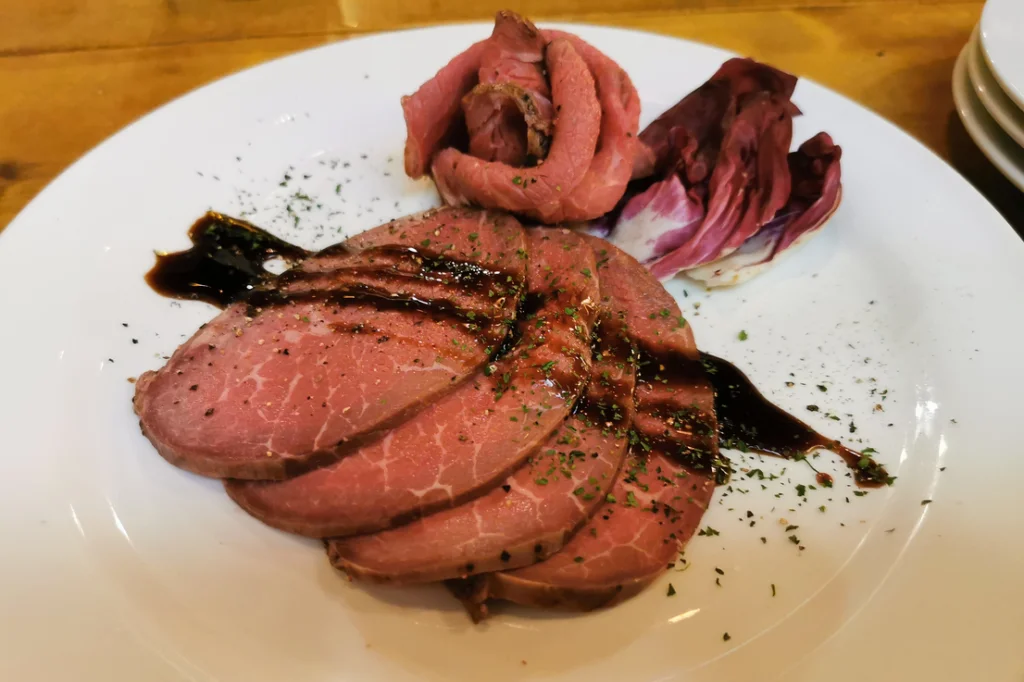
Sunday’s beautiful roast beef would be carefully sliced and wrapped in aluminum foil, transforming from the centerpiece of dinner into Monday’s lunch possibilities. Mom would layer the slices between sheets of foil, creating neat packages that preserved both the meat’s moisture and her sense of economy—nothing from Sunday dinner went to waste if she could help it. The foil-wrapped roast beef was destined for sandwiches, quick reheating, or incorporation into Monday night’s hash, but it always spent at least a day or two wrapped in that silver shroud. The Spruce Eats takes a bite out of the international history of this rich dish.
The weight of that foil package told you how successful Sunday dinner had been—a heavy package meant plenty of leftovers for the week ahead, while a light one suggested the roast had been particularly popular at the dinner table. Unwrapping leftover roast beef was always a moment of anticipation because good roast beef could taste even better the next day, especially when it had been properly protected by a tight foil wrapping. The aluminum foil kept the meat from drying out and prevented it from absorbing other refrigerator flavors, ensuring that Monday’s sandwich would taste almost as good as Sunday’s dinner.
4. Baked Potato Wrapped and Ready for Reheating
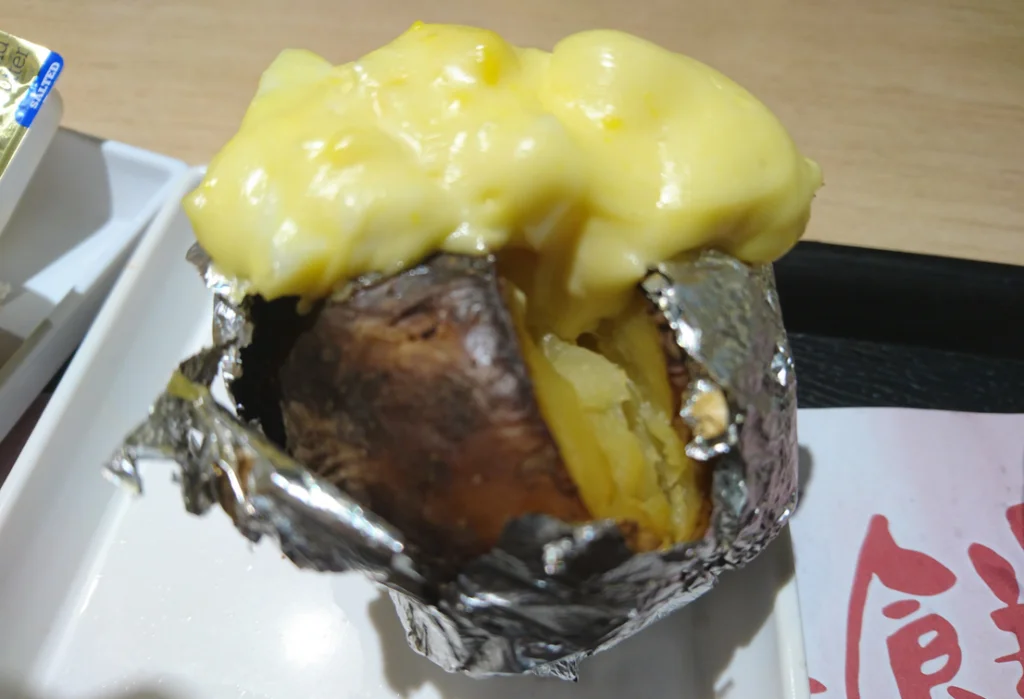
The foil-wrapped baked potato was a staple of efficient meal planning, representing the foresight of cooking extra potatoes when the oven was already hot for other purposes. These silver-wrapped treasures would line up in the refrigerator like little presents, each one a potential quick meal that just needed reheating to become a satisfying lunch or dinner side. The foil that had originally been used for baking became the storage wrapper, creating a seamless transition from oven to refrigerator without requiring additional containers or cleanup.
Reheating a foil-wrapped baked potato was an art form that every family member learned through trial and error—too long in the oven and you’d have a dried-out disappointment, too little time and you’d bite into a cold center. The foil wrapping made them perfect for tossing into a toaster oven or back into a regular oven for a quick reheat, and the results were usually better than trying to microwave a naked potato. These foil-wrapped potatoes represented the practical side of home cooking, where planning ahead and making the most of every cooking session was just good household management.
5. Half a Block of Cream Cheese
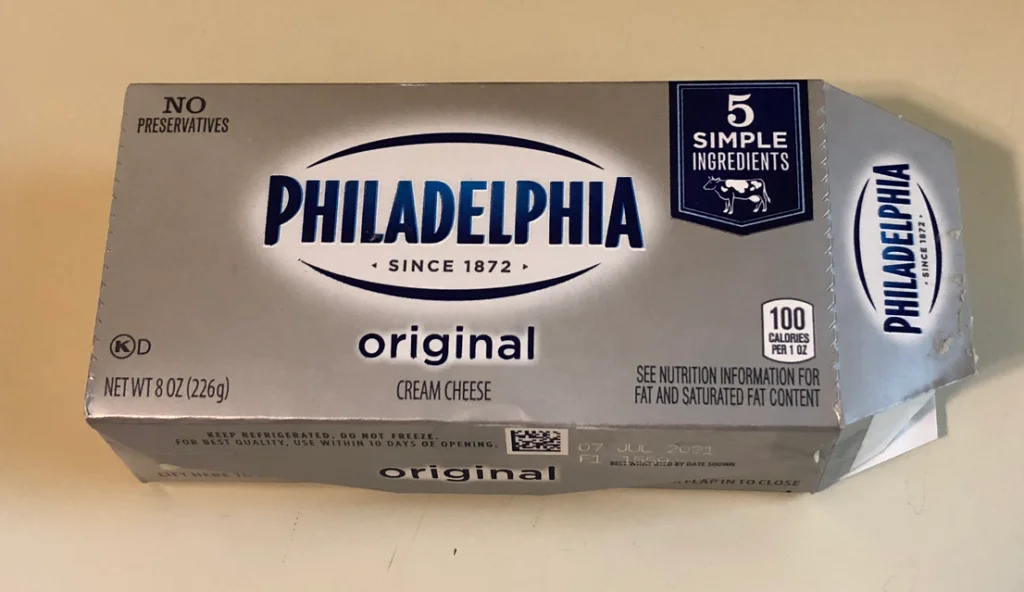
Philadelphia cream cheese came in those distinctive silver-wrapped blocks, but once opened, the remaining half would get rewrapped in aluminum foil like a precious commodity that needed protection. The original foil wrapper was never quite the same after being opened, so Mom would tear off a fresh piece of Reynolds Wrap to properly secure the unused portion. This careful rewrapping was essential because cream cheese was expensive enough that letting it go bad was practically a household crime, and the foil ensured it would stay fresh for weeks.
That foil-wrapped cream cheese half was a versatile ingredient that could transform into frosting, bagel spread, or the base for countless recipes, but it required proper storage to maintain its smooth texture and mild flavor. The aluminum foil prevented the cream cheese from absorbing refrigerator odors and kept it from developing that unpleasant dried-out skin that ruined both appearance and taste. Finding that silver-wrapped package in the fridge was always a small victory because it meant you had the foundation for everything from cheesecake to herb dip without having to buy a whole new package.
6. Corn on the Cob Saved from Summer’s Bounty

Fresh sweet corn was such a treat during its brief season that any leftover ears got the full foil treatment, carefully wrapped to preserve that just-picked sweetness for another day. The corn would be wrapped while still on the cob, husks removed but kernels intact, creating neat silver packages that held the promise of summer’s sweetness even when stored in the cool refrigerator. This was usually corn from a local farm stand or roadside vendor, the kind that was so good it was worth saving every precious ear.
Those foil-wrapped corn cobs represented the season’s fleeting abundance and the desire to stretch summer’s flavors as long as possible before returning to frozen or canned alternatives. The aluminum foil kept the kernels from drying out and prevented them from absorbing other flavors, ensuring that reheated corn still tasted like the peak of summer. Unwrapping that foil and finding perfectly preserved corn kernels was like discovering a little bit of summer magic in the middle of winter, reminding you why fresh sweet corn was worth the wait each year.
7. Sliced Ham from Holiday Dinners

The leftover ham from Easter, Christmas, or other holiday celebrations would be carefully sliced and wrapped in aluminum foil, creating packages that would feed the family for days after the big meal. These weren’t just any leftovers—this was the good ham, the centerpiece of a special dinner, and it deserved proper treatment to maintain its flavor and texture. The foil wrapping prevented the ham from drying out and kept it from absorbing refrigerator odors that might compromise its distinctive smoky-sweet taste.
Holiday ham wrapped in foil became the foundation for countless post-celebration meals: ham sandwiches, ham and bean soup, ham salad, and quick breakfast additions to scrambled eggs. The sight of those silver-wrapped packages in the refrigerator was a reminder of recent celebrations and a promise of easy meals ahead, when cooking energy might be in short supply. Each unwrapping revealed ham that was still moist and flavorful, proving that aluminum foil was the perfect preservation method for these special occasion leftovers.
8. Chocolate Cake Slices Protected Like Treasure
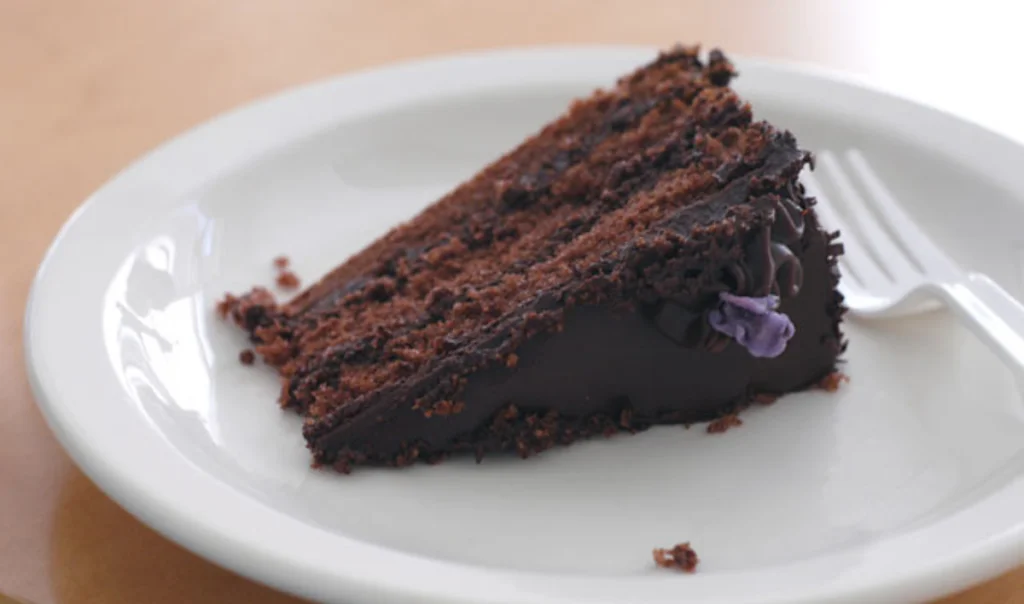
Individual slices of homemade chocolate cake would be carefully wrapped in aluminum foil, each piece treated like a precious commodity that needed protection from both air exposure and potential midnight raiders. The foil served dual purposes: preserving the cake’s moisture and creating individual portions that could be grabbed for lunch boxes or afternoon treats. This was usually cake made from scratch, the kind that represented hours of work and deserved to be preserved properly rather than left to dry out under plastic wrap.
The ritual of wrapping cake slices in foil was almost as satisfying as eating them, creating neat little packages that looked professional and kept the frosting from sticking to anything. These foil-wrapped slices would stack neatly in the refrigerator, each one a promise of sweetness waiting to be unwrapped and enjoyed. The aluminum foil prevented the cake from absorbing refrigerator flavors and kept the frosting from hardening, ensuring that each slice tasted as good as it did when the cake was first cut.
9. Half a Casserole Dish Worth of Tuna Noodle Casserole
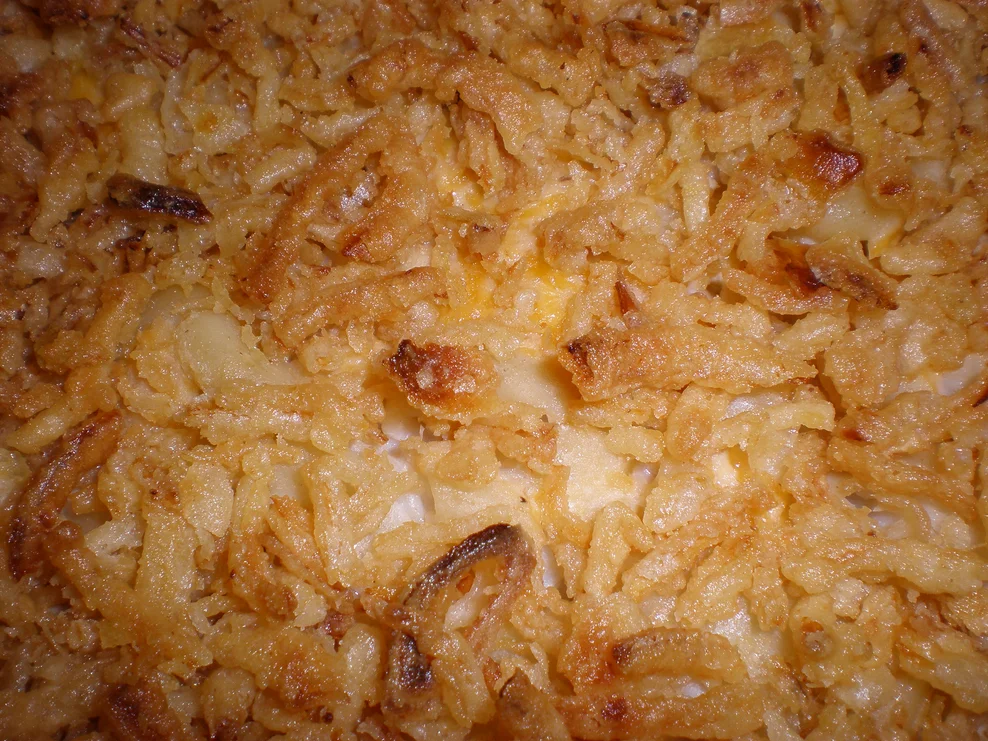
Tuna noodle casserole was the kind of dish that always made more than one family could eat in a single meal, so the remaining portion would get covered with aluminum foil and stored for reheating later in the week. The foil created an airtight seal over the casserole dish, preventing the top layer from drying out and keeping all those comfort food flavors locked inside. This was practical cooking at its finest—making a big batch of something satisfying and economical, then storing it properly to provide easy meals for busy weeknights.
That foil-covered casserole dish represented the backbone of family meal planning, sitting in the refrigerator like a reliable friend ready to solve the “what’s for dinner” question with minimal effort. The aluminum foil could go straight from refrigerator to oven for reheating, making the whole process seamless and reducing cleanup time. Lifting that foil to check on the casserole was always revealing—sometimes it looked exactly as good as when it was first made, other times it had transformed into something even more delicious as the flavors melded together during storage.
10. Deviled Eggs Arranged on a Plate

Deviled eggs were party food that required careful presentation, so any leftovers would be covered with aluminum foil rather than transferred to a different container that might damage their perfect appearance. The foil tented carefully over the plate, creating enough space to protect the piped filling while keeping the eggs fresh and preventing them from absorbing refrigerator odors. These weren’t just ordinary hard-boiled eggs—they were dressed up for company, and they deserved storage treatment that respected their elevated status.
The sight of that foil-covered plate in the refrigerator was always a pleasant surprise, representing unexpected treats that could be enjoyed for breakfast, lunch, or snacks until they were gone. The aluminum foil preserved both the visual appeal and the creamy texture of the filling, ensuring that leftover deviled eggs were still company-worthy even days after the original event. Peeling back that foil revealed eggs that looked almost as perfect as when they were first arranged, proving that proper storage could extend the life of even delicate party foods.
11. Meatloaf Slices Ready for Tomorrow’s Dinner
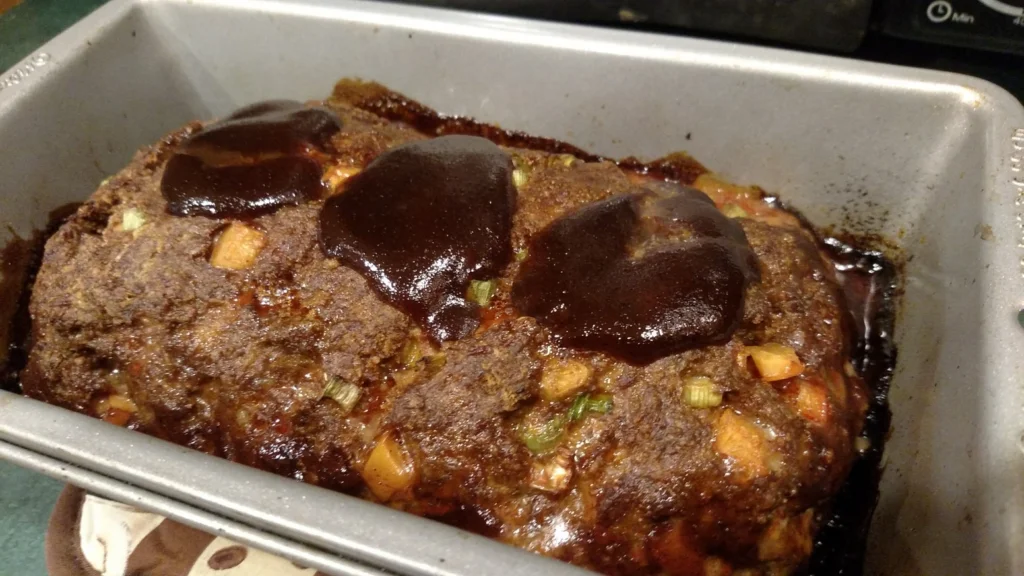
Meatloaf was designed to provide multiple meals, so the remaining portion would be sliced and wrapped in aluminum foil, creating individual servings that could be quickly reheated for busy weeknight dinners. Each slice was carefully wrapped to preserve moisture and prevent the meat from drying out, because good meatloaf was worth the extra effort required for proper storage. The foil wrapping also made it easy to grab exactly the number of portions needed without unwrapping the entire remaining loaf.
Those foil-wrapped meatloaf slices represented the practical wisdom of batch cooking, where Sunday’s dinner preparation provided solutions for Tuesday and Wednesday’s meal challenges. The aluminum foil kept the meatloaf tender and flavorful, and individual wrapping meant family members could reheat their own portions without heating more than necessary. Unwrapping a perfectly preserved slice of meatloaf was like receiving a gift from your past self, providing a satisfying meal with minimal effort and maximum flavor retention.
12. Butter Sticks Rescued from Their Original Wrapper
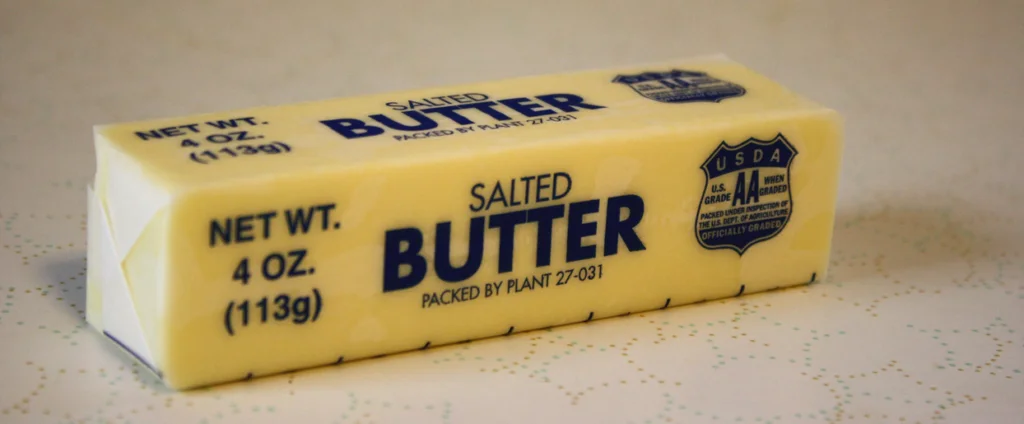
When butter boxes got damaged or the inner wrappers tore, individual sticks would be rewrapped in aluminum foil to maintain freshness and prevent refrigerator odors from affecting the butter’s pure flavor. This was especially important for expensive butter or butter bought in bulk during sales, when proper storage meant the difference between savings and waste. The foil created a better seal than damaged original wrappers and could be easily unwrapped for measuring without destroying the whole package.
Foil-wrapped butter sticks were a sign of a well-organized kitchen where nothing went to waste and everything had its proper place and protection. The aluminum foil prevented the butter from absorbing strong flavors from other foods and kept it at the perfect consistency for baking or spreading. These carefully wrapped sticks represented the attention to detail that separated good cooks from great ones, ensuring that every ingredient was properly preserved and ready for use when needed.
13. Jell-O Salad from the Church Potluck
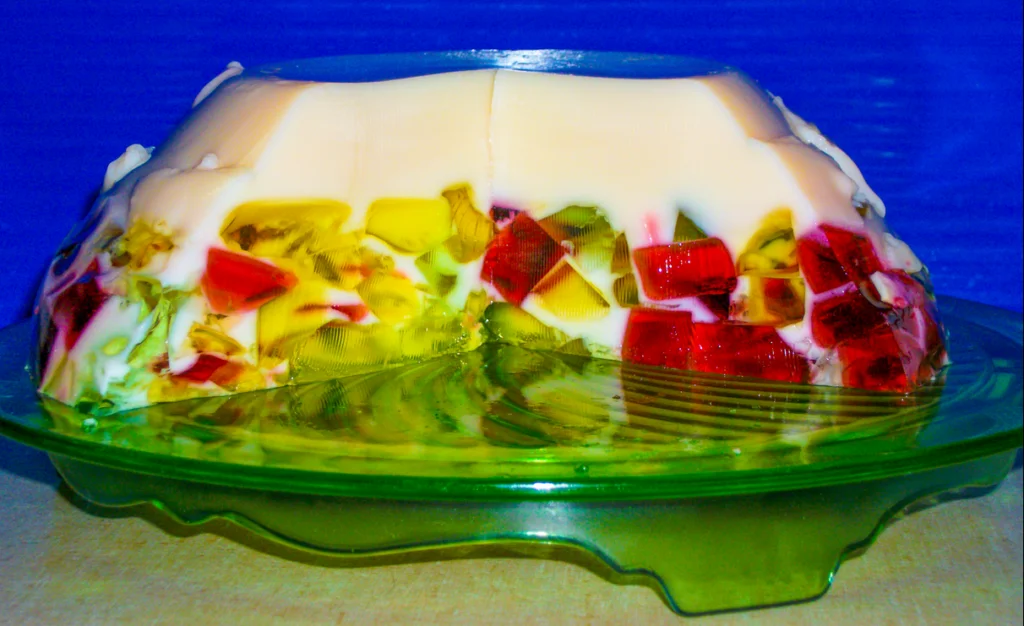
Fancy Jell-O salads with fruit, nuts, or vegetables suspended in colorful gelatin were always made in large quantities for church dinners and family gatherings, leaving plenty to bring home wrapped in aluminum foil. These weren’t simple Jell-O—they were elaborate creations that required multiple steps and careful timing, making them too precious to waste and too delicious to leave behind. The foil protected the gelatin’s perfect texture and prevented it from absorbing any unwanted flavors during refrigerator storage.
The foil-covered Jell-O salad in the refrigerator was a reminder of community gatherings and the shared effort that went into church dinners and family reunions. Each unwrapping revealed layers of carefully arranged ingredients suspended in perfectly set gelatin, proving that these elaborate salads were worth the effort required to make them. The aluminum foil preserved both the visual appeal and the refreshing taste that made these molded salads such popular additions to special occasion meals.
14. Banana Bread Loaf Sliced and Stored
Homemade banana bread was too good to risk going stale, so individual slices would be wrapped in aluminum foil to preserve that perfect moist texture that made it so irresistible. The foil kept each slice fresh enough to pack in lunch boxes or serve to unexpected guests, ensuring that the time and effort invested in baking from scratch paid off in multiple satisfying servings. This was usually bread made from overripe bananas that might otherwise have been wasted, transforming them into something special that deserved proper preservation.
Those foil-wrapped slices of banana bread represented the triumph of home baking over store-bought alternatives, each piece a testament to the cook’s skill and patience. The aluminum foil prevented the bread from drying out and kept it moist enough to be enjoyed for days after baking, extending the pleasure of that fresh-from-the-oven taste. Unwrapping a piece of perfectly preserved banana bread was like receiving a small gift, providing comfort and satisfaction that only homemade baked goods could deliver.
Looking back, aluminum foil was more than just a kitchen tool—it was the guardian of our family’s culinary memories and the protector of precious leftovers in an era when wasting food was practically a sin. Those silver-wrapped packages in the refrigerator told the story of careful meal planning, frugal household management, and the deep satisfaction that came from making good food last as long as possible. While today’s kitchens might rely on plastic containers and vacuum sealers, there was something almost magical about the way aluminum foil could transform ordinary leftovers into mysterious packages that held the promise of easy meals and unexpected treats just waiting to be unwrapped.


